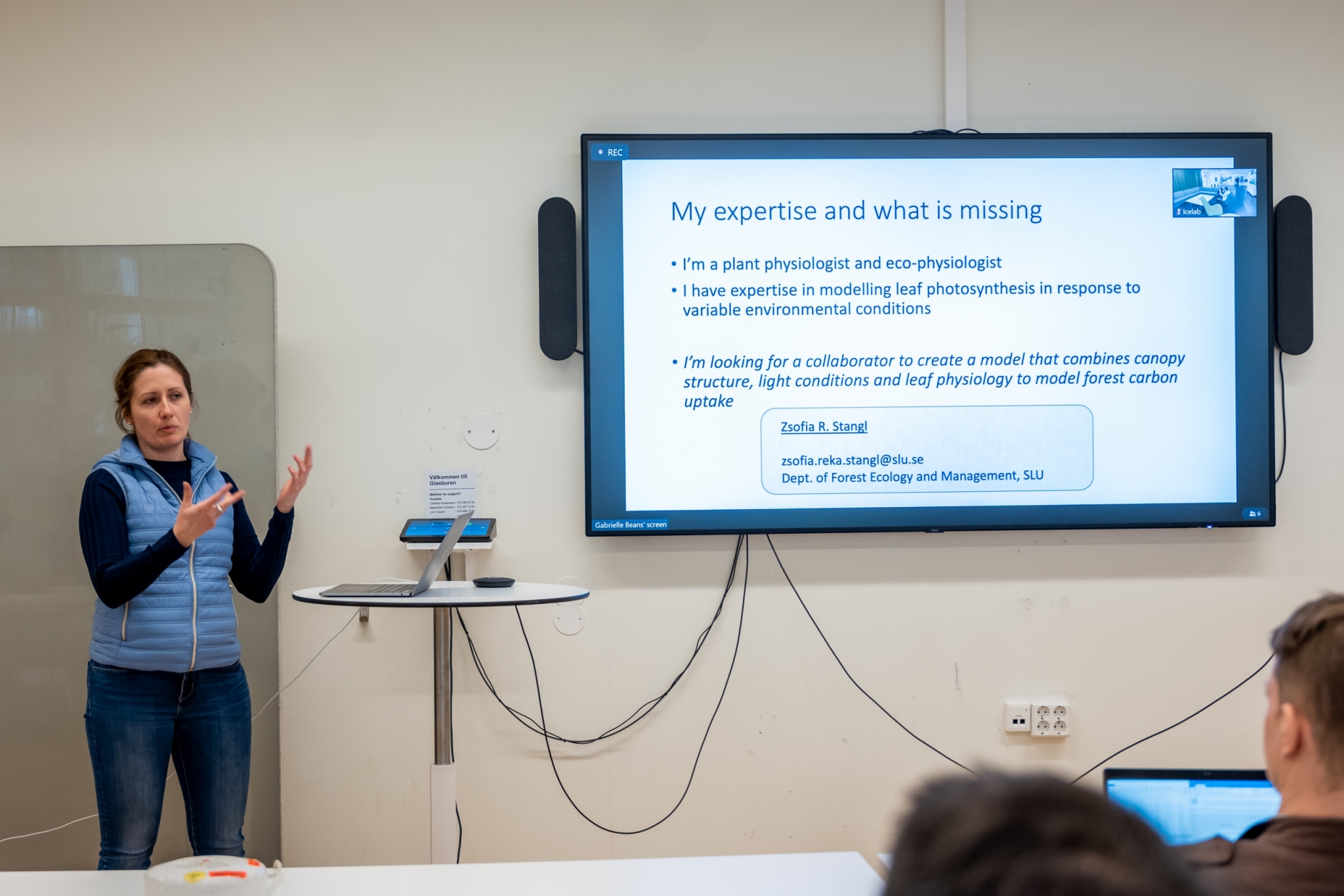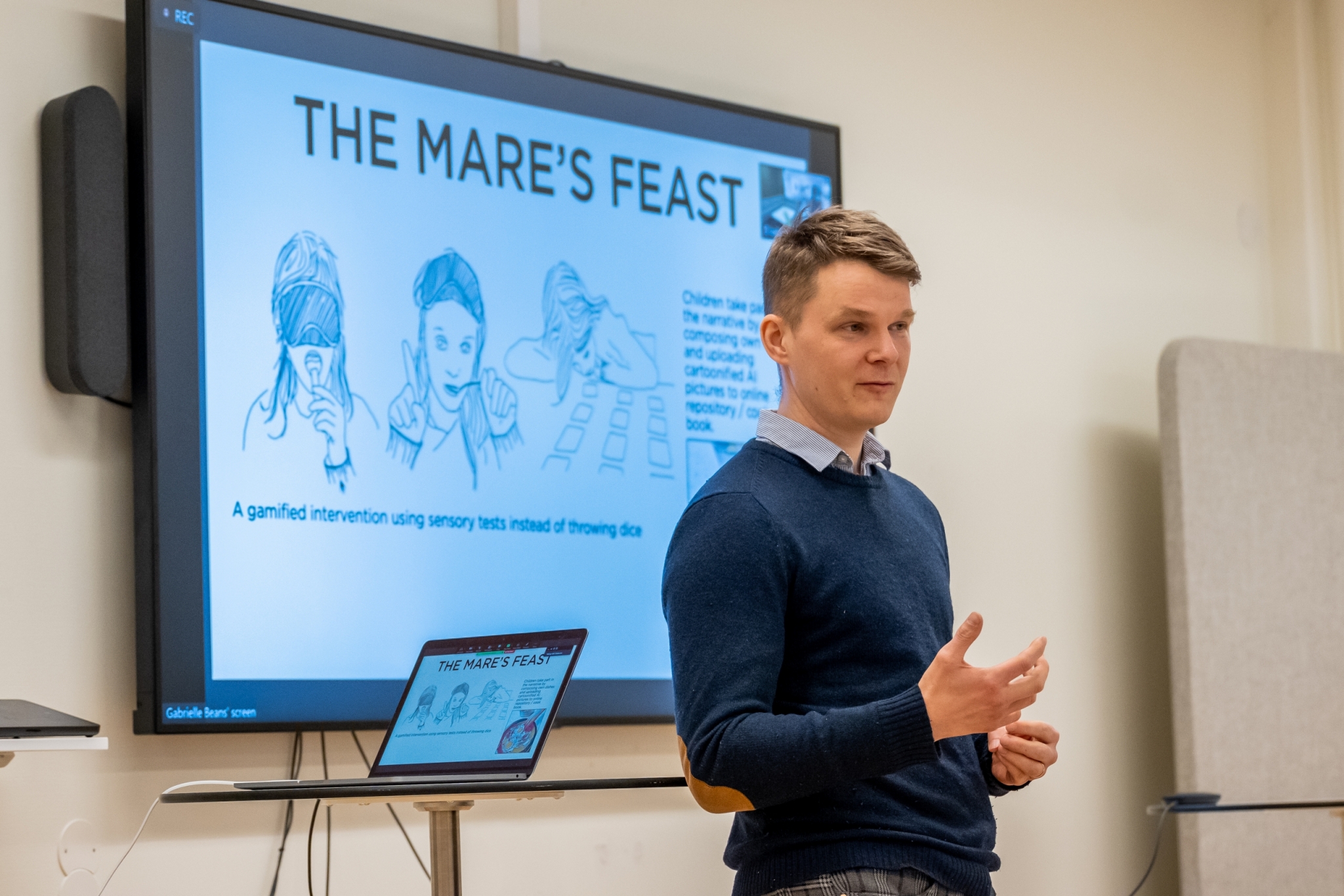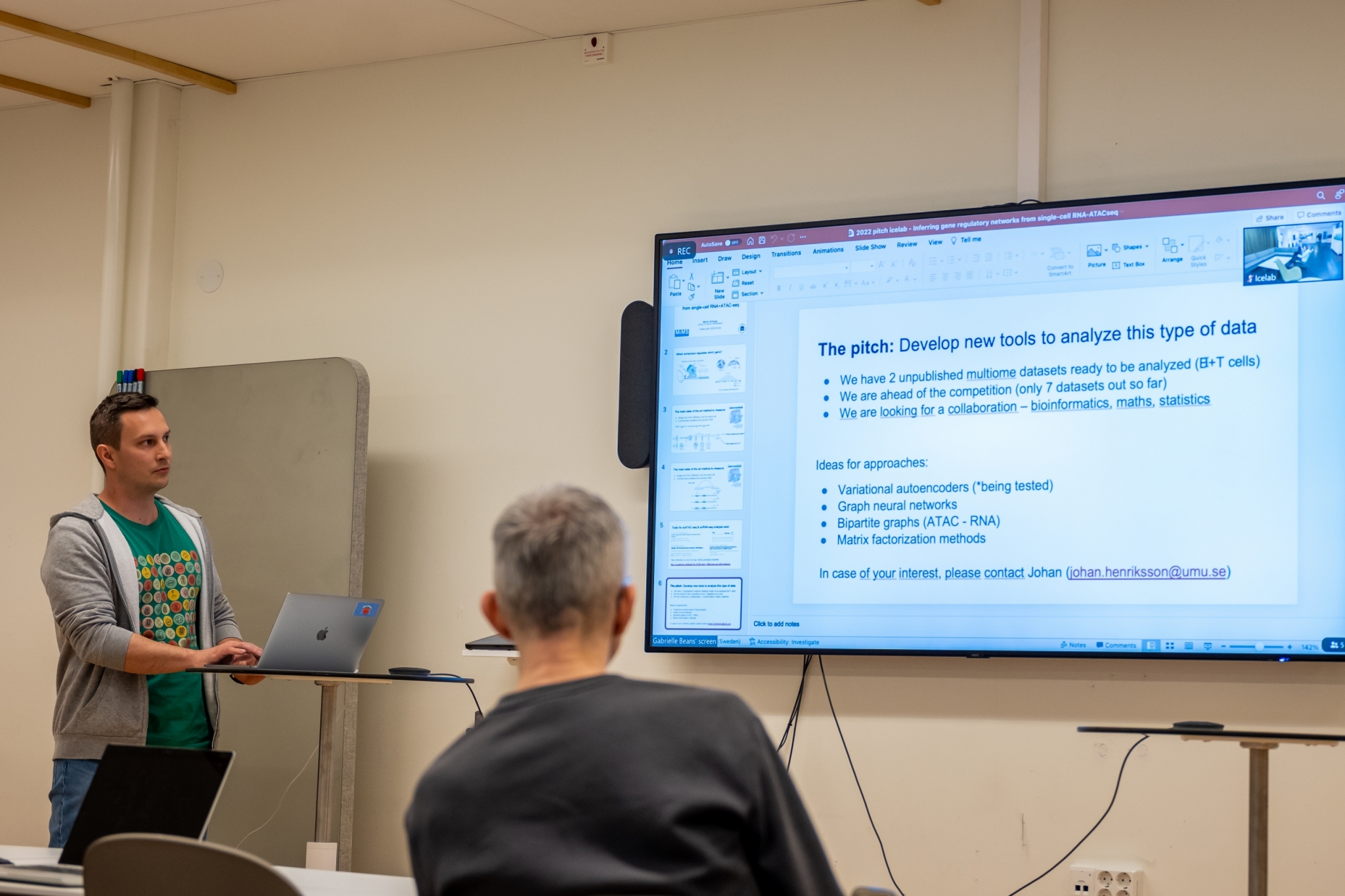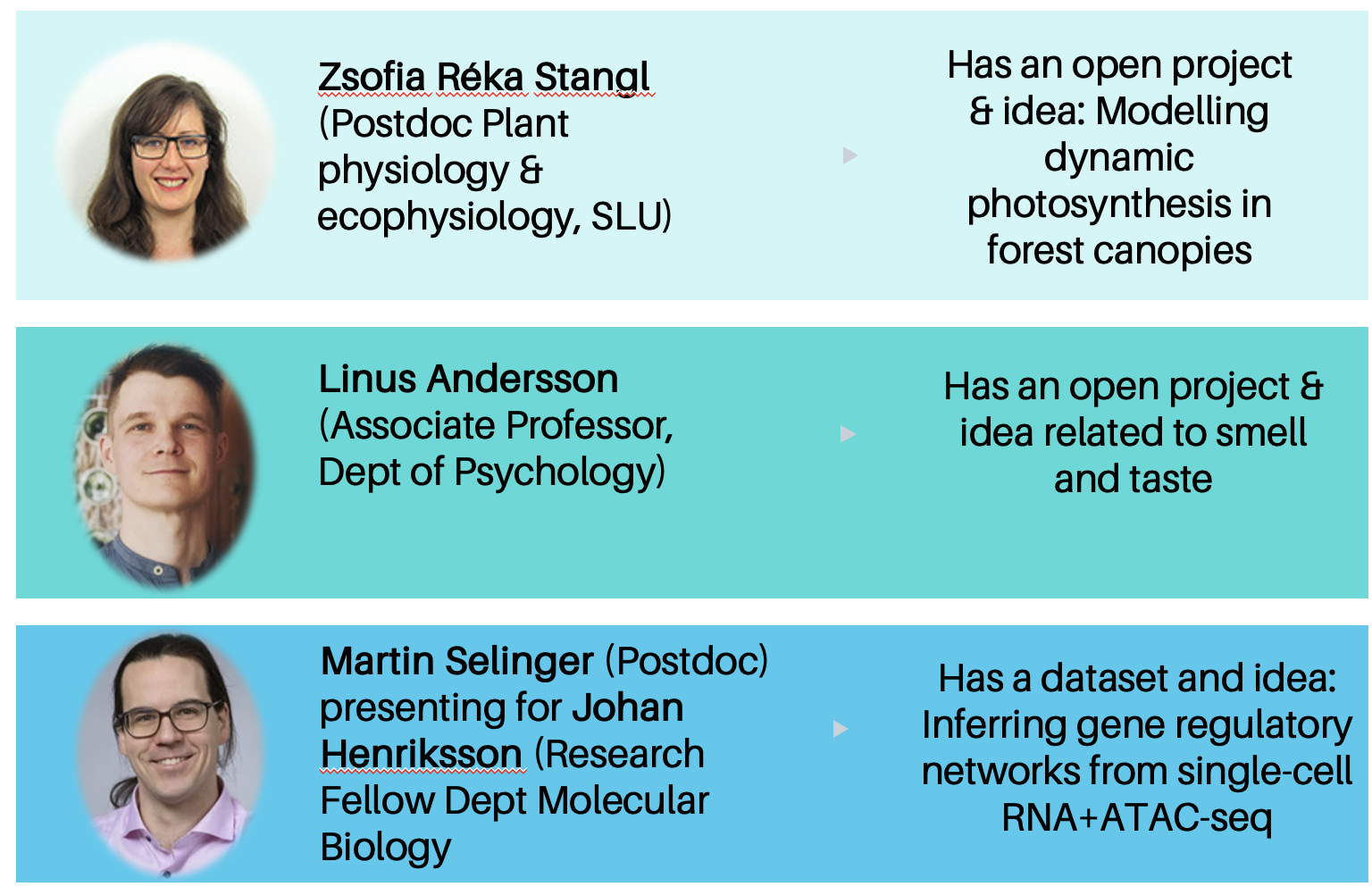In search of collaborators to study forest canopies, childrens’ tastes and new bioinformatic tools
April 26, 2022
Three researchers pitched projects during the IceLab multidisciplinary postdoctoral project call information session. They are seeking project partners to complete their teams and submit a project together for the call. Find out more about their pitches and reach out to them if they interest you!
First pitcher: Zsofia R. Stangl, Postdoctoral Fellow at the Department of Forest Ecology and Management, SLU
Title: Modelling dynamic photosynthesis in forest canopies
The pitch: Zsofia Stangl, a plant physiologist and eco-physiologist with expertise in modelling leaf photosynthesis in response to variable environmental conditions, is looking for a collaborator to model the forest canopy. The model should combine canopy structure, light conditions and leaf physiology to model forest carbon uptake. Current models do not take into account fluctuating light conditions, leading to incorrect predictions of carbon uptake, for example. The ideal collaborator to help with this project would have interest and expertise in modelling complex, dynamic systems and in developing new concepts for modelling natural processes.
Second Pitcher: Linus Andersson: Associate Professor, Department of Psychology, and Deputy Director of Curiosum, Umeå University
Title: Tasting tomorrow
The pitch: Linus Andersson proposes a project with the goal of promoting children’s sustainable eating through games, and exploring the development of smell and taste. The project could include components of psychology, culinary arts, AI, visualization and gaming, implemented within the science center Curiosum in a school program and a sensory exhibit for the public. Children would experience a collaborative card game which uses sensory tests instead of throwing dice, with the goal of guiding them towards a more sustainable diet. There would be the possibility for the children to co-create a cookbook, with their uploaded photos cartoonified using AI. This project could have many different entry points for expanding the collaborative team and focusing the research outcomes further depending on interested parties. For example, this project could contribute to the research in the development of smell and taste in children, or non-formal learning outcomes from the interventions in the science center, or focusing on the AI gamification elements, or even research in how to change human behaviour.
Third Pitcher: Martin Selinger (Postdoctoral fellow) presenting for Johan Henriksson, Research Fellow, Department of Molecular Biology, Umeå University
Title: Inferring gene regulatory networks from single-cell RNA+ATAC-seq
The pitch: Johan Henriksson’s group is searching for collaborators with expertise in bioinformatics, mathematics or statistics to contribute to their research on gene regulatory networks. Fundamentally, they seek to understand which enhancers regulate which genes in human cells, for example lymphocytes. DNA enhancers are part of a regulatory complex that turns genes on. New experimental methodology can identify, from a single cell, which genes are on (RNA-seq data) and which gene enhancers are open (accessible chromatin in the nuclei – ATAC-seq data), at the same time. There are bioinformatic tools to study each of these datasets separately, but there is no co-analysis method published yet for RNA-seq and ATAC-seq together. The project already has two unpublished multiome datasets ready to be analyzed (B+T lymphocytes), and is ready to take the next step with a quantitative collaborator.




